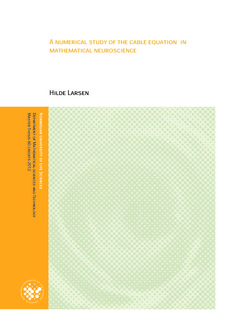A numerical study of the cable equation in mathematical neuroscience
Master thesis
Permanent lenke
http://hdl.handle.net/11250/188845Utgivelsesdato
2012-09-17Metadata
Vis full innførselSamlinger
- Master's theses (RealTek) [1722]
Sammendrag
The aim of this thesis is to compare di erent numerical methods for solving
the cable equation for electrical signal propagation along dendrites with diameter
varying in space.
We solve the model with four di erent methods: a nite di erence scheme,
nite element method, separation of variables combined with a nite di erence
scheme and separation of variables combined with the nite element
method. The di erent methods gives quite di erent solution even if the solutions
main properties are the same. Separation of variables combined with
the nite element method o ers a solution of much lower value than the
other methods. This can be a result of an overestimate of the eigenvalue
of the problem. The nite element method and the method of separation
of variables combined with a nite di erence scheme gives almost the exact
same solutions, a fact that was to expect during the derivations. The nite
di erence scheme is the easiest method to use even if it is important for the
schemes consistency how the derivatives was replaced by nite di erences.
Finite di erence method is the method that give the less complicated programming
in Matlab as well.
The solutions for di erent diameter geometry are as expected from the
mathematical analysis done in advance. The solutions stays symmetric about
the mid point in space if the diameter and the initial condition have the same
symmetry. The peak of the solutions for non-symmetric diameters move towards
increasing space variable for a decreasing diameter and towards decreasing
space variable for an increasing diameter.
